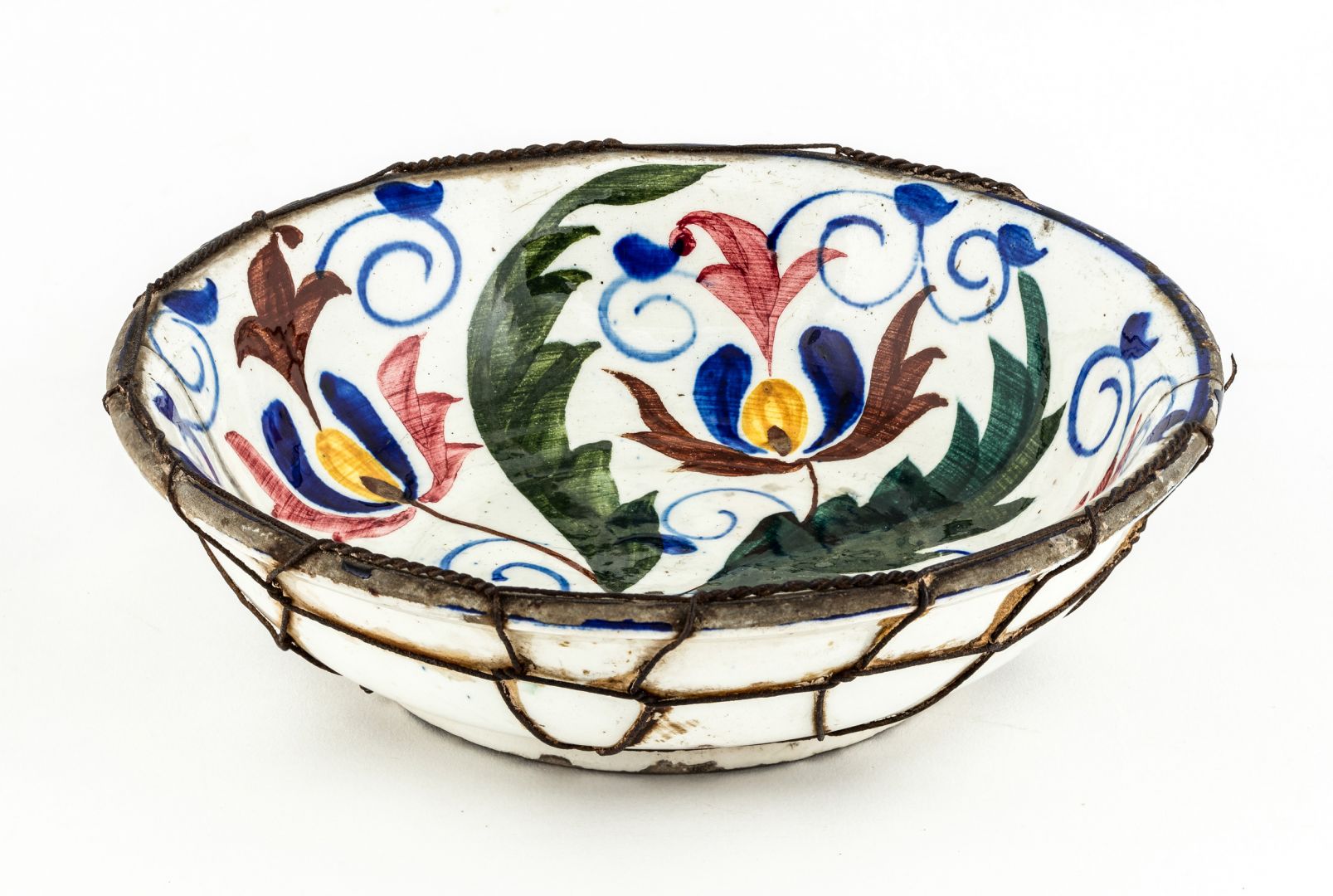Hall 3 - 5. view /
Decorative Bowl
Decorative bowl, Miskolc Stoneware Factory, 1890
hand-painted, glazed, moulded earthenware; diameter: 17 cm, base diameter: 9.7 cm, height: 4.7 cm; impression on the bottom: MISKOLCZ 0000
Historical Collection, Inv. No.: 58.102.1.
The manufacturing of stoneware, also known as earthenware, originated from England and spread throughout Europe. The first stoneware factory in Hungary was founded at Holics in 1779, which was followed by a second factory in Telkibánya in 1820, with the latter also being capable of manufacturing porcelain.
Miskolc became a part of Hungarian stoneware manufacturing relatively early. There were a total of three factories active within the town throughout the 19th century. The first operated during 1832–1843 at the location of the present day Győri kapu. It was followed by a second factory operating at the same site until 1863. Two decades later, trader Miksa Koós founded the third factory. This had no relation to the previous two, it was merely an extension of his original glass staining and porcelain painting business under Zsolcai kapu 5, which expanded into a large-scale facility by 1884.
The bowl presented here is a product of the third factory. White-firing clay was poured into the mould in a paste-like state, which was fired after drying. Afterwards decorative painting was applied, then the vessel was glazed and fired a second time. The hand-painted plant decoration is a clear indicator that this piece is from the Koós factory, as its products were characterized by having folk decorations. The numerical code on the bottom aids in the more precise dating of the vessel.
The bowl is a fine example of the quality that made these products from Miskolc popular. Despite their popularity, the increase of imported goods had a negative impact on sales, which resulted in the stoneware factory’s closure in 1901. Since its 1899 founding, the museum of Miskolc always emphasized the collection of mementos from local ceramic production. This bowl was acquired by the museum in 1958.
Andrea Pirint
